Xusheng Xiao
On the Security Risks of Knowledge Graph Reasoning
May 03, 2023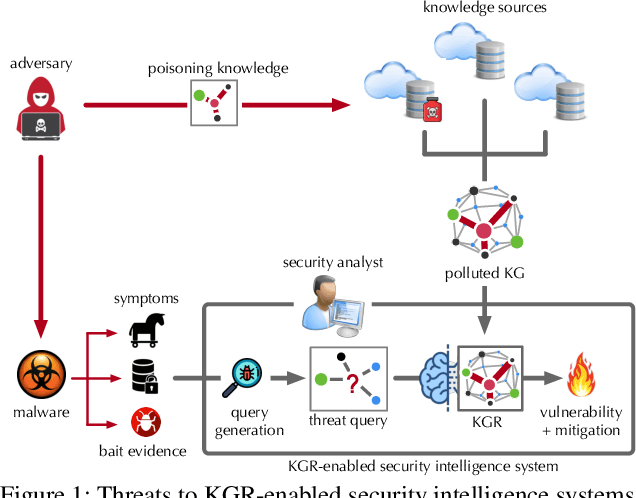

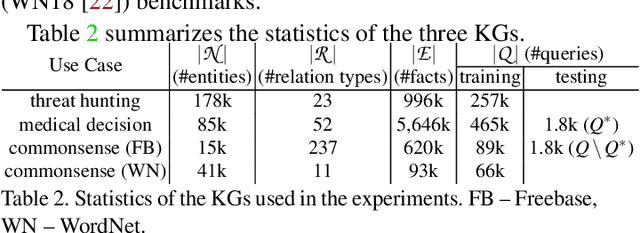
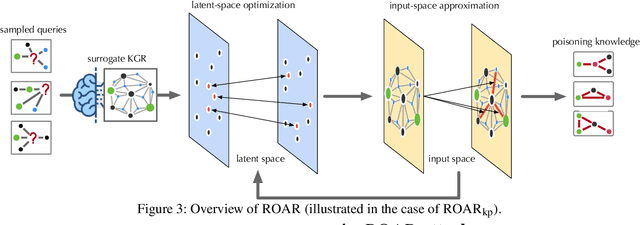
Abstract:Knowledge graph reasoning (KGR) -- answering complex logical queries over large knowledge graphs -- represents an important artificial intelligence task, entailing a range of applications (e.g., cyber threat hunting). However, despite its surging popularity, the potential security risks of KGR are largely unexplored, which is concerning, given the increasing use of such capability in security-critical domains. This work represents a solid initial step towards bridging the striking gap. We systematize the security threats to KGR according to the adversary's objectives, knowledge, and attack vectors. Further, we present ROAR, a new class of attacks that instantiate a variety of such threats. Through empirical evaluation in representative use cases (e.g., medical decision support, cyber threat hunting, and commonsense reasoning), we demonstrate that ROAR is highly effective to mislead KGR to suggest pre-defined answers for target queries, yet with negligible impact on non-target ones. Finally, we explore potential countermeasures against ROAR, including filtering of potentially poisoning knowledge and training with adversarially augmented queries, which leads to several promising research directions.
A System for Efficiently Hunting for Cyber Threats in Computer Systems Using Threat Intelligence
Jan 17, 2021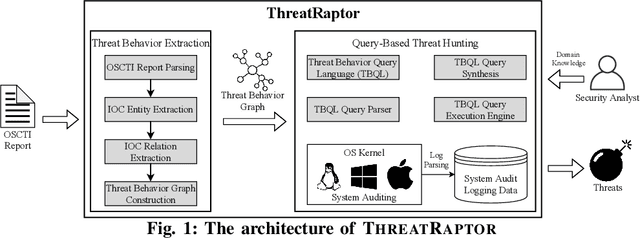

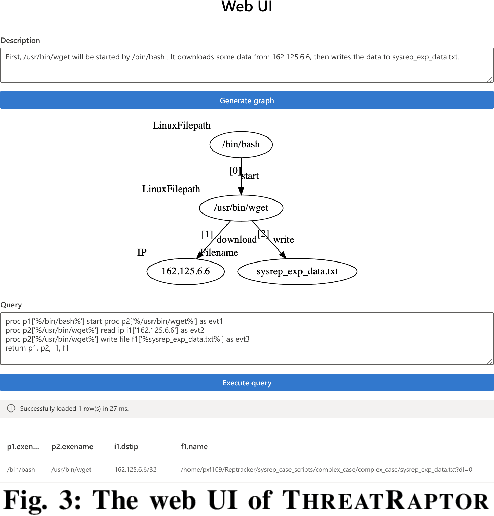
Abstract:Log-based cyber threat hunting has emerged as an important solution to counter sophisticated cyber attacks. However, existing approaches require non-trivial efforts of manual query construction and have overlooked the rich external knowledge about threat behaviors provided by open-source Cyber Threat Intelligence (OSCTI). To bridge the gap, we build ThreatRaptor, a system that facilitates cyber threat hunting in computer systems using OSCTI. Built upon mature system auditing frameworks, ThreatRaptor provides (1) an unsupervised, light-weight, and accurate NLP pipeline that extracts structured threat behaviors from unstructured OSCTI text, (2) a concise and expressive domain-specific query language, TBQL, to hunt for malicious system activities, (3) a query synthesis mechanism that automatically synthesizes a TBQL query from the extracted threat behaviors, and (4) an efficient query execution engine to search the big system audit logging data.
Enabling Efficient Cyber Threat Hunting With Cyber Threat Intelligence
Oct 26, 2020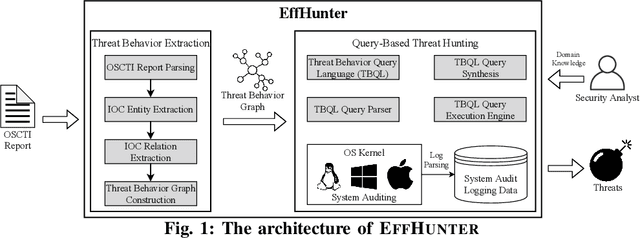

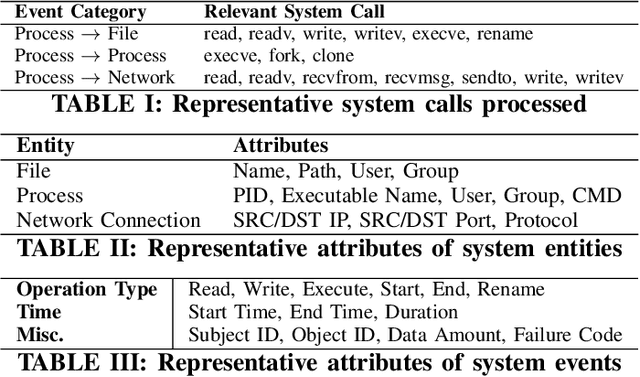
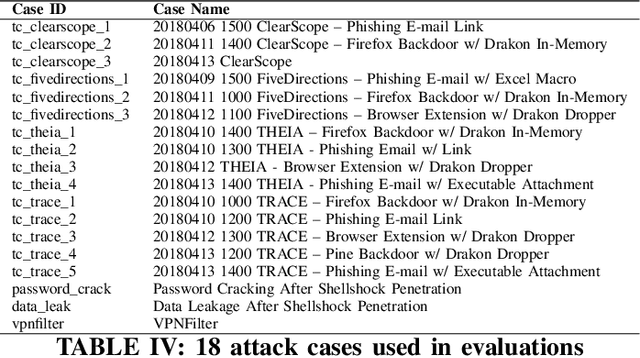
Abstract:Log-based cyber threat hunting has emerged as an important solution to counter sophisticated cyber attacks. However, existing approaches require non-trivial efforts of manual query construction and have overlooked the rich external knowledge about threat behaviors provided by open-source Cyber Threat Intelligence (OSCTI). To bridge the gap, we propose EffHunter, a system that facilitates cyber threat hunting in computer systems using OSCTI. Built upon mature system auditing frameworks, EffHunter provides (1) an unsupervised, light-weight, and accurate NLP pipeline that extracts structured threat behaviors from unstructured OSCTI text, (2) a concise and expressive domain-specific query language, TBQL, to hunt for malicious system activities, (3) a query synthesis mechanism that automatically synthesizes a TBQL query for threat hunting from the extracted threat behaviors, and (4) an efficient query execution engine to search the big audit logging data. Evaluations on a broad set of attack cases demonstrate the accuracy and efficiency of EffHunter in enabling practical threat hunting.
Behavior Query Discovery in System-Generated Temporal Graphs
Nov 19, 2015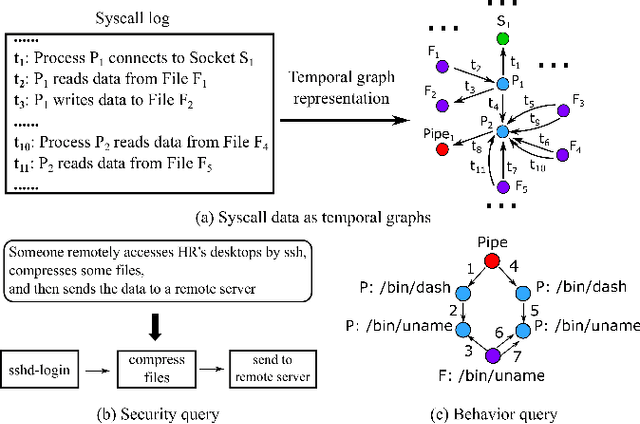
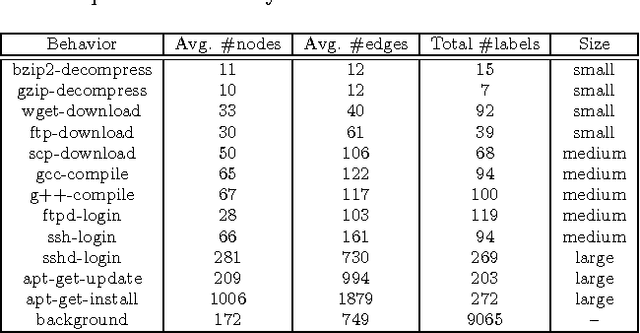

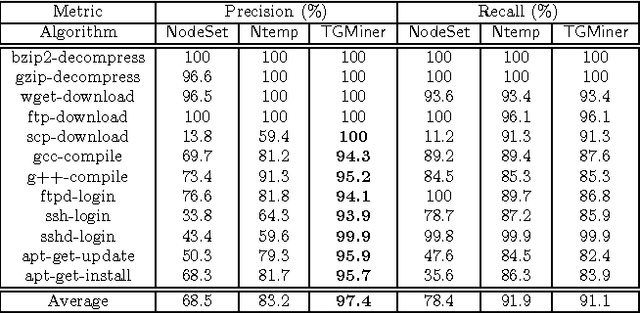
Abstract:Computer system monitoring generates huge amounts of logs that record the interaction of system entities. How to query such data to better understand system behaviors and identify potential system risks and malicious behaviors becomes a challenging task for system administrators due to the dynamics and heterogeneity of the data. System monitoring data are essentially heterogeneous temporal graphs with nodes being system entities and edges being their interactions over time. Given the complexity of such graphs, it becomes time-consuming for system administrators to manually formulate useful queries in order to examine abnormal activities, attacks, and vulnerabilities in computer systems. In this work, we investigate how to query temporal graphs and treat query formulation as a discriminative temporal graph pattern mining problem. We introduce TGMiner to mine discriminative patterns from system logs, and these patterns can be taken as templates for building more complex queries. TGMiner leverages temporal information in graphs to prune graph patterns that share similar growth trend without compromising pattern quality. Experimental results on real system data show that TGMiner is 6-32 times faster than baseline methods. The discovered patterns were verified by system experts; they achieved high precision (97%) and recall (91%).
 Add to Chrome
Add to Chrome Add to Firefox
Add to Firefox Add to Edge
Add to Edge